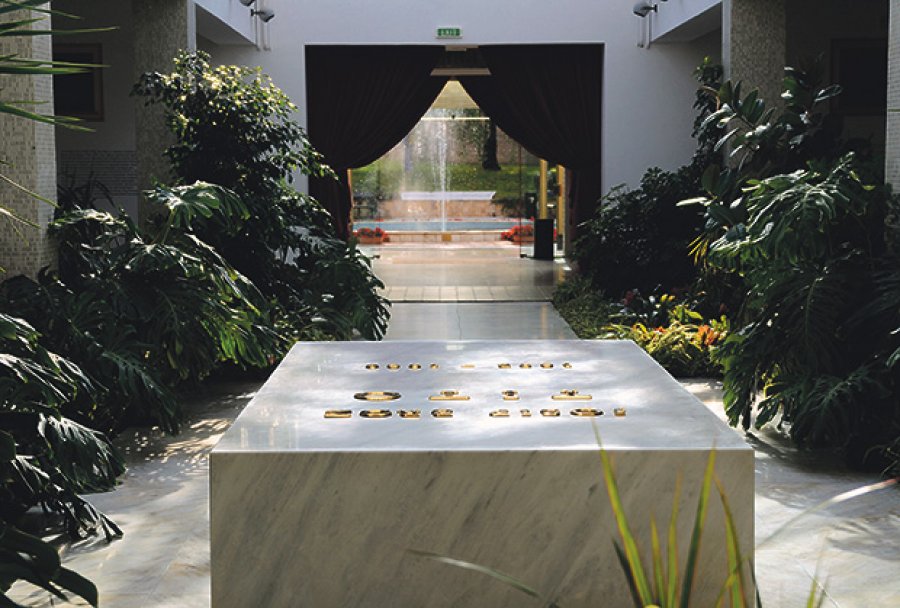Am I the only Yugoslavian who hasn’t visited the Flower House, the resting place of the last President of Yugoslavia, Tito? I was born and brought up under liberal communism and I should be grateful to him – Tito. But I was never confirmed into Tito’s youth organisation, the Pioneers, which had an initiation ritual which was almost religious, albeit without the live animals but a kid’s soul instead, and with no mention of God, only Tito. This was when you had to confirm your commitment to your homeland, brotherhood and unity and fellow Pioneers, but a few weeks before my big day I got appendicitis and was hospitalised and never again got the chance to declare my love for my country or see the communist light. When he died I didn’t feel obliged to pay my respects to his casket or visit his tomb, even though I was constantly pestered to. I just didn’t feel the need. Then 20 years later, after exploring the EC in depth by living in various countries, a friend decided to come to Belgrade and visit Tito’s tomb. Of course the guide was me. I wanted to see if I was still Yugoslavian.
Tito’s tomb is in the Museum of the 25th May, part of the Museum of the History of Yugoslavia, and is very close to Partisan Stadium, and at the beginning of December it was almost empty except for the coachload of visitors from Slovenia – the highest number of foreign tourists to Serbia are from Slovenia. Is this guilt or a desire to learn what they were part of for 46 years?
The old Museum is now a large exhibition space and its current exhibition is Polish and Russian official and dissident art, called“Behind the Iron Curtain”. It is divided into 3 sections, WWII, the rebuilding of the war-torn country and happy people, and this last section had numerous portraits – farmers in the field, the naval officer with a huge medal, an ordinary, good looking woman in a blue suit with the communist star proudly pinned over her heart. The most significant work is from 1936 and shows Stalin’s name in big red letters with Lenin’s face reflecting back in the red paint.
After the exhibition we went to see the “Flower House” and Tito’s tomb. The complex of the buildings used by Tito during his life is now his resting place. There are lots of angry people who think that Tito’s resting place should move from Belgrade to Croatia as he was Croatian and also because he damaged Serbia by dividing her into three parts, Inner Serbia, the Autonomous Region of Kosovo and the Autonomous Region of Vojvodina. There is even someone so resentful that they keep trying to sell his tomb on the Serbian version of Ebay!
His tomb is very simple, plain white marble with his name and dates of birth and death engraved in gold. Sceptics are commenting on the absence of the red star, a symbol of communism, convinced that he was a Mason, although no one proved this yet. His tomb is positioned so that he can see the biggest working Church in Europe, St Sava. I am sure Tito didn’t want a view over a church especially when proclaiming that “Religion is the opium of the people” and went on to close down so many Orthodox churches, prosecuting priests and abolishing all religious gatherings.
His office is filled with Ching dynasty furniture, generously given by a Slovenian family which made me wonder about the combination of the two. But of course there are lots of unanswered questions about the communist time. There is a huge collection of batons which were used on mass relay races throughout Yugoslavia when all sorts of people would run – housewives, pioneers, workers, peasants, reformed political dissidents – and at the end present their batons to Tito at the Partisan Stadium on his birthday, 25th May. There would be a huge ceremony and half the schools and Universities in the country were closed. Did I go to any? No. My mum keeps saying that I am an antisocial person.
Next to the Flower House there is a permanent exhibition of official gifts presented to Tito. Some are very bizarre such as the face towel, handmade and inscribed with “to dear Tito”. The art is beautiful but purpose wrong. I stayed the longest in front of a sword from XVII century brought to Sarajevo by the great great great grandchildren of Mehmed Pasa Sokolovic who got it from the Sultan of the Ottoman Empire. The sword is beautifully worked with Arabic inscriptions described by Orhan Pamuk in his book “My Name is Red”. There a good display of national customs from different parts of the former Yugoslavia, and it was nice to see them today when we are all dressed the same jeans and leather jackets. All the exhibits have an English description and the staff are very helpful. The atmosphere is very laid back and very organised. I bought a great souvenir, Tito’s cookery book with recipes for the meals served to his famous guests, Kennedy, Richard Burton and Elizabeth Taylor, Gina Lolobridga, Kissenger and so on.
We spent a good three hours at the museum altogether. Entry tickets are 300 dinars, about £2.50.
ReadyClickAndGo offers private day trips and sightseeing excursions throughout Serbia, with your own English-speaking local guide, car and driver. A private city tour of Belgrade with a private car, driver and English-speaking local guide is £65 per person.
For more information please email Tara@ReadyClickAndGo.com or check our website at www.ReadyClickAndGo.com











